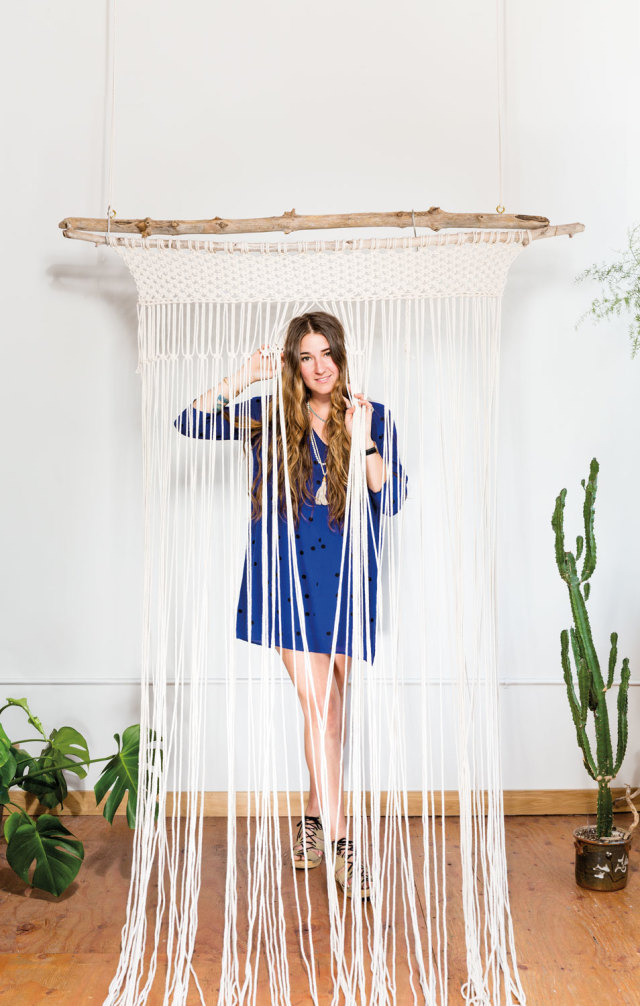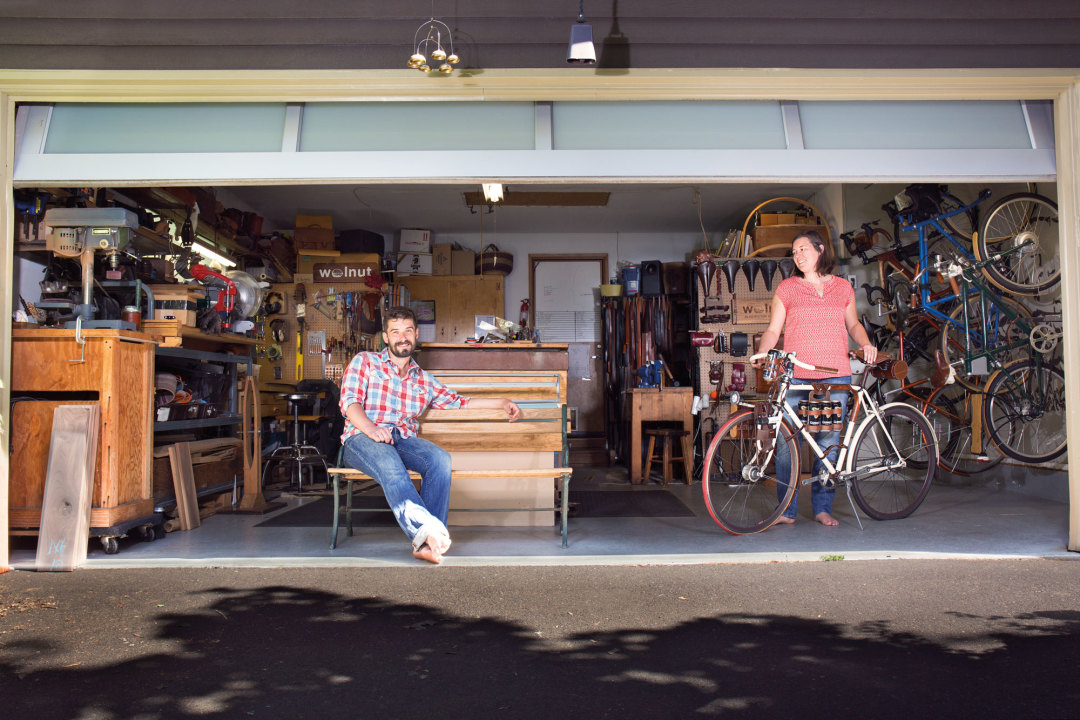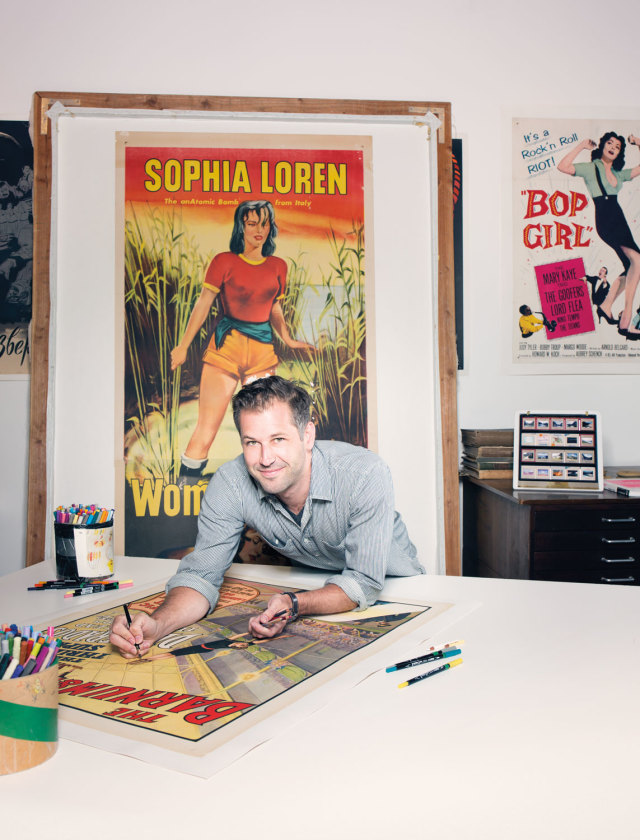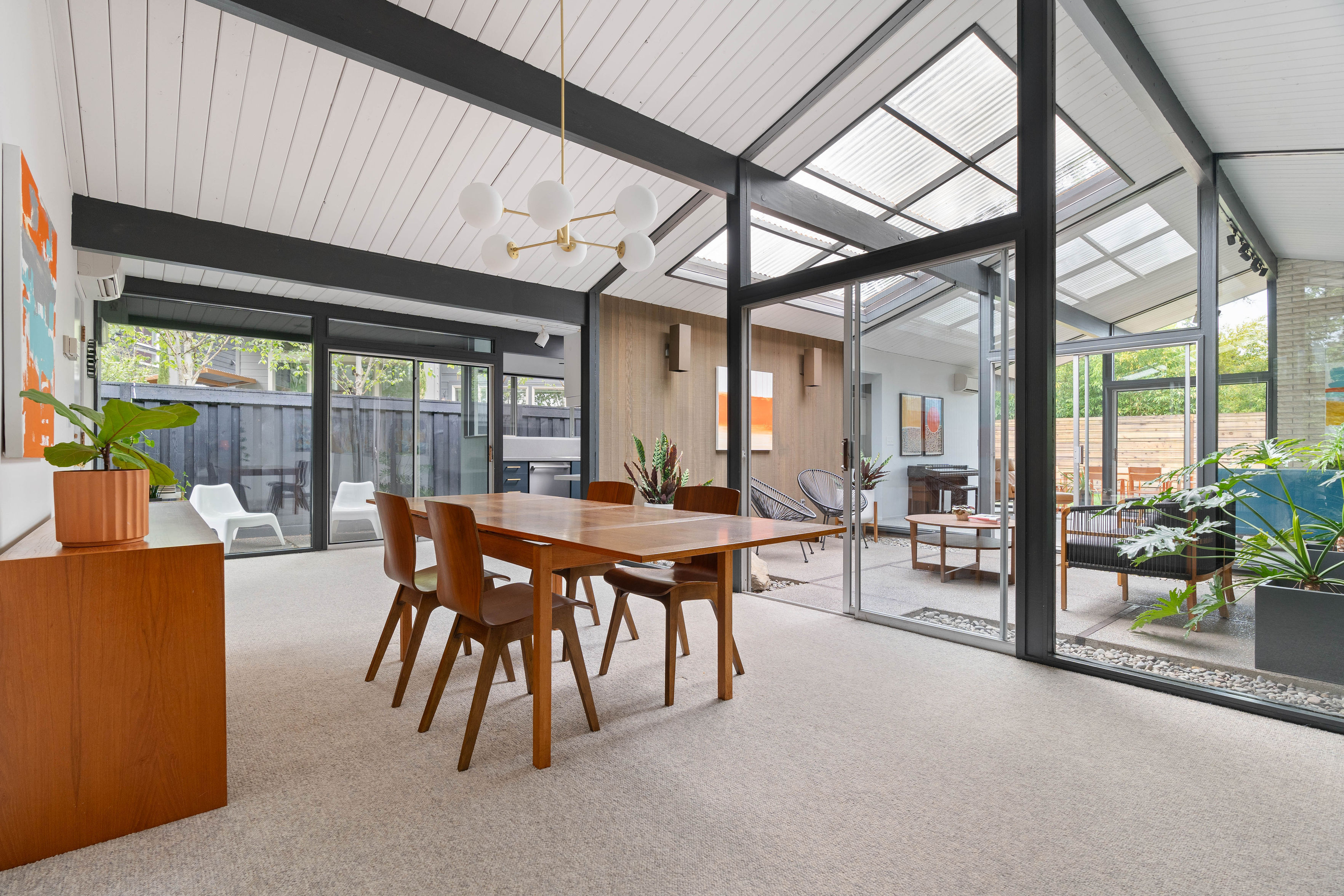
Meet Portland's Hottest Makers of the Moment

Image: Nicolle Clemetson
Emily Katz - Modern Macramé
Zzzzzwick—thwap! Zzzwick—thwap! The long cotton rope sings as Emily Katz loops it over itself and pulls the cord tight. Knot after knot, row after row—her arms pumping like pistons. “Macramé totally puts you into a trance state,” she says, zipping through another knot. “And, after eight hours, it really makes your arms hurt.”
For the past three years Katz, 32, has helped to spearhead an international, workshop-based “macramé revival.” The former fashion designer’s simple plant hangers and wall hangings are hot items at shops from New York to Austria, while her elaborate installations—including a 10-foot-tall macramé tent crafted from 5,000 feet of rope, snapped up by the Ace Hotel for $5,000—have become Instagram catnip.
The self-described “modern romantic hippie” grew up in Portland but learned the craft as a way to bond with her mother during an East Coast visit in 2012. She now holds regular classes and works in an airy warehouse space at the eastern edge of the Fremont Bridge: a lacy, loopy jungle of knotted ropes, snaking vines, Oregon driftwood, and baskets of snarled cords.
Contrary to macramé’s homespun, even frumpy reputation, Katz’s years as an eco-conscious fashion designer lend her pieces a clean, crisp sensibility. Her simple square knots proliferate in endless repeating patterns, the textured rope creating nubby hillocks of shadow and light.
She hopes to expand to large-scale fine art projects and create an instructional book in the near future, but the heart of the operation remains her classes, which both impart the medium’s technical secrets and position macramé as a kind of feel-good therapy. “We all have so much crazy shit going on in our lives,” she says. “With macramé, people have free rein to relax and create something beautiful.” modernmacrame.com

Image: Nicolle Clemetson
Geoffrey & Valerie Franklin - Walnut Studiolo
Geoffrey Franklin can see solutions in three dimensions.
“I learned the process of design through the medium of architecture and intellectual projects,” says the University of Oregon architecture grad, “and now I have a kind of geometric mind.” These days, those geometric ruminations come to life in the form of hand-stitched leather goods, from drawer pulls to cribbage-board belts to six-pack carriers. In 2007, he moved from Oregon City to Portland with his wife, Valerie, and began commuting by bike to his job at Ankrom Moisan. After leaving his U-lock behind one too many times, he created his own leather holster that would snap onto his rack—a permanent, reliable home for the oft-forgotten device.
Geoffrey soon began tinkering with other commuting solutions—bar wraps, frame handles, portage straps—and the couple launched an Etsy shop in 2009 to see if they could sell his work. They could. After a well-timed appearance at Portland’s BikeCraft fair, sales began to climb, and by 2011 Geoffrey and Valerie were both working full-time on Walnut Studiolo.
Today, the operation’s garage is stacked with blades, awls, mallets, leather scraps, and prototypes. Here, Geoffrey transforms raw sheets of vegetable-tanned cattle hide into glowing works of functional art—each cut, edged, burnished, dyed, and stitched by hand—while Valerie oversees shipping, marketing, customer service, and business planning. Currently, Walnut ships about 3,000 orders each year to more than 45 countries and all 50 states. The latest release? A line of handcrafted marijuana accessories, from stash boxes to “doobie tubes.”
Savvy angle, you could say.

Image: Nicolle Clemetson
Reed LaPlant - Reed Laplant Studio
Buy furniture from Reed LaPlant, and you wade into some deep currents. He finds inspiration in the Prairie School style, à la Frank Lloyd Wright and his idealization of craftsmanship and form. He draws on the centuries-old, salvaged Southern hardwoods piled in his Northeast Portland shop, hauled here when he moved from Atlanta. And his work—rectilinear, restrained, both modernist and timeless—reflects a lifelong fascination with making things right.
“I come from rural Wisconsin,” the 46-year-old says. “You needed something, you made it happen. I took industrial-arts classes in school, and when I was in seventh grade my drafting teacher said, ‘Kid, you need to be an architect.’”
LaPlant did study architecture, but found that medium a little too deliberate for his personality. “I arrived at furniture pretty organically, in that architecture just took too long for my attention span,” he says. “A piece of furniture is like a small building, but it goes from concept to reality in three weeks.”
In his 900-piece catalog of beds, tables, dressers, desks, credenzas, and more, everything is one-off. If possible, LaPlant visits clients’ homes before sketching. And these days, he says, customers are as interested in the process as in the final product. “More and more, people want to come with me to the lumberyard,” he says. “If they’re choosing something they’ll have for the rest of their lives, they want to know who’s making it and how it’s made.”
“A lot of people now seem to hold this kind of work in high regard,” he adds, with a touch of self-deprecating amusement. “I just feel like a redneck making stuff.” Either way, it’s working: LaPlant typically has a couple dozen orders going at once.

Image: Nicolle Clemetson
Jason Leonard - Affiche Studio
Jason Leonard pulls a brittle, brown document—frayed at the edges, looking like it’s on the verge of disintegrating—from a shelf. He carefully unfolds it to reveal a bearded, Robinson Crusoe-esque figure advertising a French umbrella shop, Maison du Robinson. It’s 178 years old.
This precarious act is the first step in the process through which the 37-year-old Portlander will return Monsieur Crusoe to his former glory. Leonard has been restoring vintage posters since 2003, after a degree in illustration led him to an apprenticeship at Affiche Studio. Three years later he bought the business, and last year converted a former grocery store in Northeast Portland into Affiche’s official home.
He now receives posters from all over the world, dating from the 18th century to the 1970s. He mounts them on a canvas backing and sometimes soaks them to remove acidity. To make them whole again, Leonard has boxes of scrap vintage paper in which he finds pieces to match what’s missing, patching them together on the posters “like a quilt.” If he can’t find the right color match, he’ll use archival pens and pencils, or occasionally paint, to fill in the blanks.
“The idea is to make them look good but not to be super invasive,” Leonard says.
Over the years, he’s worked on posters by Toulouse-Lautrec, Jules Chéret, and Alphonse Mucha, plus “a lot of Warhol” and “a few” Lichtensteins, but the real find was a Salvador Dalí print, signed by the artist in pencil. The only downside, in Leonard’s opinion, is that something gets lost when you reverse the aging process.
“That was really hard for me getting into the business, because I like the way old stuff looks, and now I have to cover that up.”

Image: Nicolle Clemetson
Brett Binford & Chris Lyon - Mudshark Studios
The dream of Mudshark began more than a decade ago, amid rows of clay in Steamboat Springs, Colorado. There, Brett Binford and Chris Lyon decided they would move to Portland and start their own ceramics studio—a nimble, local alternative to Asian manufacturing, with the ability to consult, design, and produce both large runs and custom, one-off pieces for clients of all sizes.
The partners launched Mudshark Studios in their 400-square-foot basement, creating ceramic molds for small clients. A grant from Mercy Corps helped them purchase their first kiln. In 2008, they landed their first big break with Schoolhouse Electric, making the elegant porcelain base for the local company’s popular Alabax lamp. Since 2010, with steady client growth and a series of grants, Mudshark expanded into a 17,000-square-foot production space housing 27 employees, 11 kilns, and a contemporary ceramics gallery called Eutectic. Clients include Rejuvenation, Kohler, McMenamins, and countless smaller artists. “We don’t want to just work with the big boys,” says Binford. “Diversity is important.”
In 2010, the pair helped launch Portland Growler Company, a line of hand-poured, slip-cast ceramic beer growlers. With 1,000 growlers produced monthly, PGC is now Mudshark’s third-biggest client. In July 2015, they followed up with Kept Goods, a line of refined ceramic storage containers for dry goods. Still, despite all their mass-market success and expansion, Binford and Lyon are ceramics artists at heart. “It’s important for us to be a part of the ceramics community,” says Binford. “I got into this because I love clay.”




